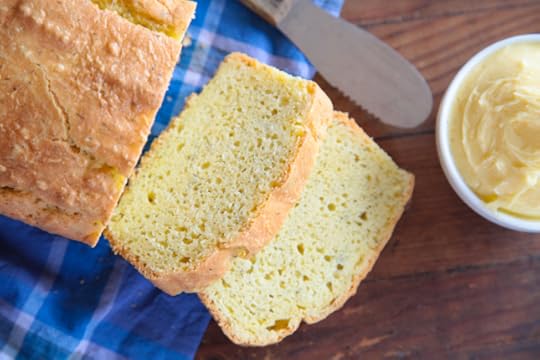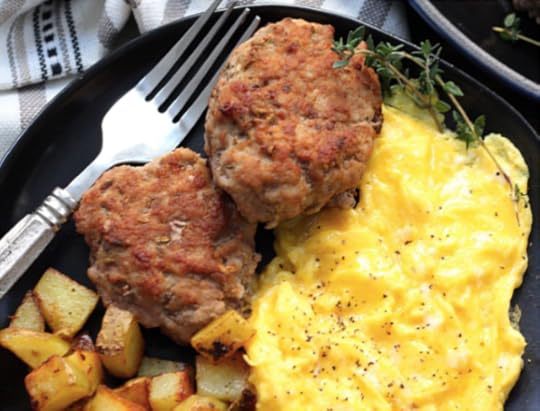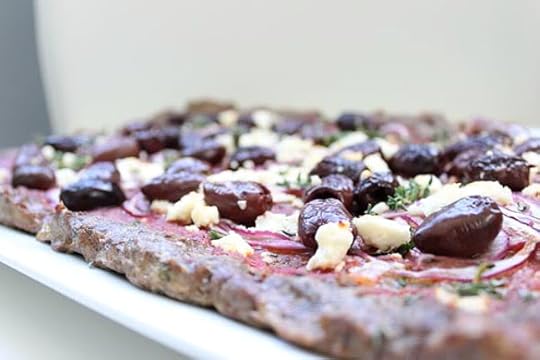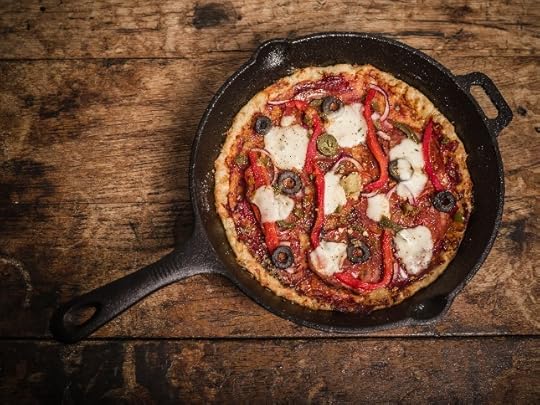Mark Sisson's Blog, page 118
January 9, 2019
20 Keto Snacks (All Under 5 Minutes)
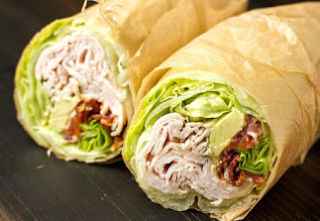 As you get keto-adapted, most people find the inclination to snack (at least snack frequently) decreases. But that can take a bit of time. It’s not necessarily something to expect your first week (although some folks do begin to experience the change within a few days, provided they’re eating enough overall). Still, even the most long-term keto dieters will want a snack now and then—or will replace a meal with a snack because they’ve settled into a solid keto nutritional strategy and don’t always need three regular “meals” most days.
As you get keto-adapted, most people find the inclination to snack (at least snack frequently) decreases. But that can take a bit of time. It’s not necessarily something to expect your first week (although some folks do begin to experience the change within a few days, provided they’re eating enough overall). Still, even the most long-term keto dieters will want a snack now and then—or will replace a meal with a snack because they’ve settled into a solid keto nutritional strategy and don’t always need three regular “meals” most days.
My theory is that meals, and particularly snacks, should be simple and easy. Few of us have time to make elaborate meals every day, and when we’re living into a new eating strategy, convenience matters. In that spirit, here are 20 keto snack ideas that take 5 minutes or less to make. Enjoy! And let me know your favorite—from this list or from your own keto or Primal practice.
1. Egg Coffee
An original Primal favorite is a great keto pick-me-up for morning or afternoon. Find the recipe here.
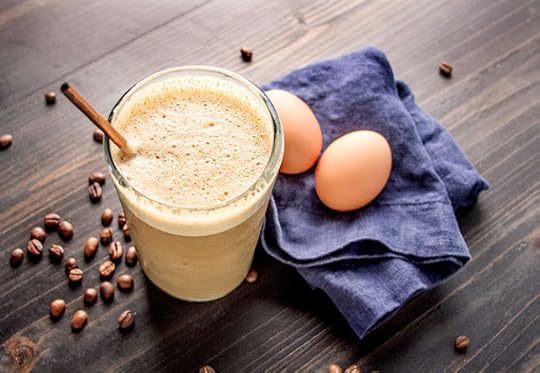
2. Soft- or Hard-boiled Egg
It doesn’t get much easier than this. Cook up a batch on Sunday, and you’ll be set for the week.

3. Guacamole
Make it as simple as you like. Mashed avocado, sea salt and lime juice do it for me, but sometimes I’ll throw in some canned green chilis, half a tomato, and some chopped red onion, garlic or cilantro.

4. Primal Kitchen® Protein Bar
I wanted a packaged keto snack to travel with, and these have become my favorite. (This variety has nine grams of total carbs.)
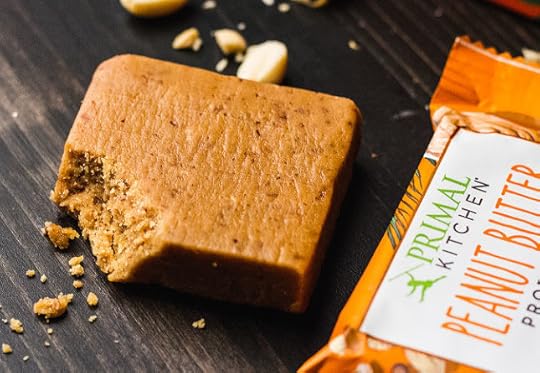
5. Tuna in Avocado Half
The fat of the avocado and Primal Kitchen Mayo with the protein of tuna make this one of the more filling snacks I turn to.

6. Olives
It’s the simple things, right? Splurge on a container of your favorite olive mix.

7. Spoonful of Artisana Coconut Butter
Just when I said it didn’t get any simpler… As I’ve shared before, this is one of my favorite go-to snacks.
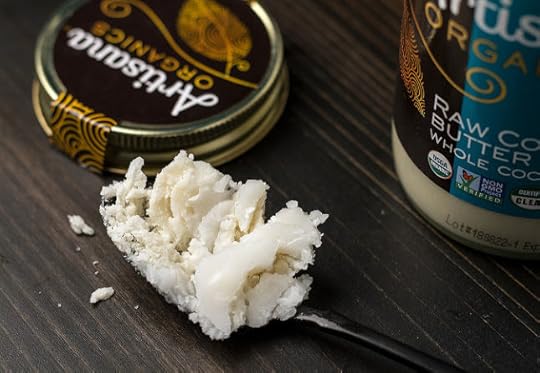
8. Raw Veggies and Healthy Dip/Dressing
Anyone can put this together in containers for the week. And, yup, Primal Kitchen Dressings make it easier and more flavorful.

9. Leftover Chicken Wings
Savvy keto strategy: make enough wings for the play-off games on Sunday. Enjoy the leftovers during the week. Deep fry them in avocado oil (trust me on this…) and slather on your favorite BBQ sauce.

10. 5-Minute Salad
As most of you know, I’m a big fan of Big-Ass Salads for lunch, but a lighter (and quicker) snack salad is always a possibility. An easy one to put together is spinach, pecans, red onions, feta and Primal Kitchen Balsamic Dressing.
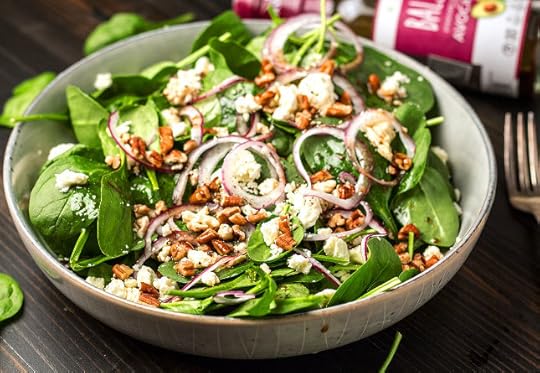
11. Leftover Steak Strips with Bell Pepper Strips and Steak Sauce
It’s a leftover lovers dream. And I’m happy to recommend a favorite steak sauce….

12. Lox Wraps
Skip the bagel carb binge and enjoy this classic on some butter lettuce or romaine leaves with a schmear of whipped cream and your favorite toppings.

13. Prosciutto-Wrapped Asparagus
Save some asparagus from dinner and take ten seconds to wrap them with this deli counter favorite.
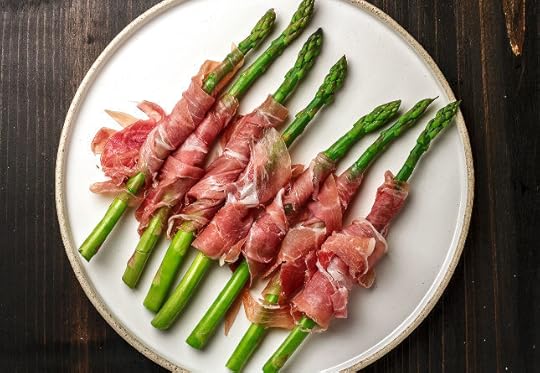
14. Macadamia Nuts
Keep a bag of them at work. They’re great with your morning coffee, too.
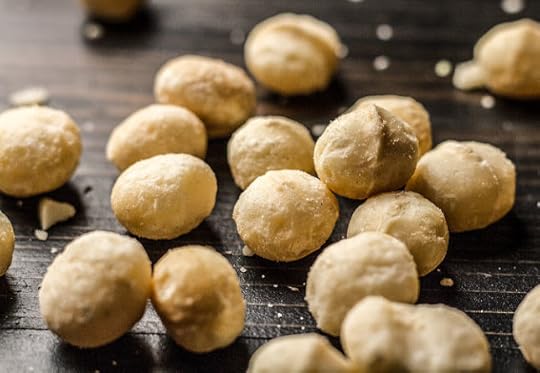
15. Unsweetened Nut Butter on Celery Sticks
Make enough for the kids because otherwise they’ll eat yours.

16. Cheese Crisps
Yup—five minutes or less. Buy pure cheese crisps at the store (sometimes they’ll contain nut flour), or make them at home.

17. Summer Sausage
Your childhood camping favorite is still a good option. (Look for a nitrate-free brand.)

18. California Sub Roll-Up
I like this easy roll-up idea. Works for Italian sub ingredients, too.
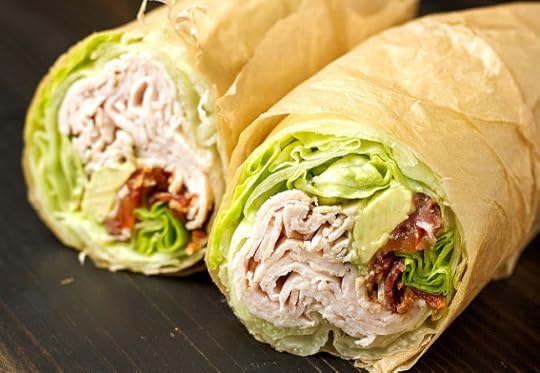
19. Shrimp Cocktail
Keto can be as indulgent as you want to make it. I like making my own cocktail sauce with Primal Kitchen Organic Unsweetened Ketchup.
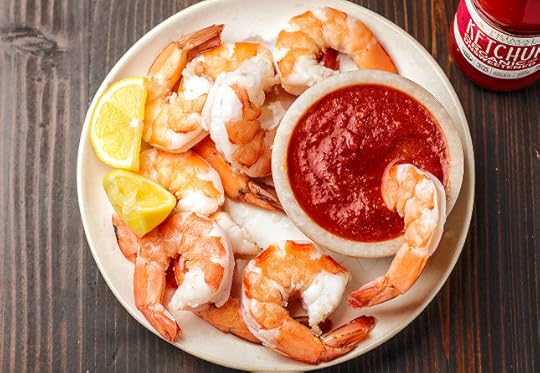
20. Square of 85% Dark Chocolate With Unsweetened Nut Butter
You didn’t think I’d leave out the dark chocolate, did you? Perfect with an afternoon coffee or as an after-dinner keto treat…

So, tell me what I missed! What are your favorite keto-friendly go-tos? Thanks for stopping in, everybody.
Want to make fat loss easier?
Try the Definitive Guide for Troubleshooting Weight Loss for free here.
The post 20 Keto Snacks (All Under 5 Minutes) appeared first on Mark's Daily Apple.



January 8, 2019
Are All Calories the Same?
 As you and millions of other people embark on new dietary journeys, you’re going to hear a ton about calories.
As you and millions of other people embark on new dietary journeys, you’re going to hear a ton about calories.
“Calorie counting is everything.”
“If you aren’t counting calories, you won’t lose weight.”
“Just eat less calories than you expend.” For one, it’s “fewer.” Two, that’s not the whole picture.
These statements aren’t wrong exactly, but they offer an overly simplistic picture of the relationship between weight loss and calories. They ignore context. And context is everything, especially when you’re talking about calories and weight loss.
Most people (even many scientists) believe that the body composition challenge is a relatively simple equation: to lose weight you must reduce calories (either eat less or burn more), to gain weight you must add calories (eat more or burn less), and to maintain weight you keep calories constant (eat and burn identical amounts). Calories in over calories out.
Right away, it sounds preposterous. Are people really maintaining perfect caloric balance by dutifully tracking and comparing their intake to their burn? Are they walking six fewer steps lest they lose an extra ounce off their midsection?
Are All Calories the Same?
The truth is, it’s more like a complex equation where you have to factor in many other very important variables:
Am I getting calories from fat, protein, or carbs?
Am I getting my calories through whole foods or refined processed foods?
Are my glycogen stores full or empty?
When’s the last time I exercised?
Am I insulin-sensitive or insulin-resistant?
Am I trying to lose “weight” or lose fat?
How’s my stress level?
Am I sleeping enough?
The answers to all those questions (and more) affect the fate of the calories we consume. They change the context of calories.
Ideally, all that complexity is handled under the hood. That’s how it works in wild animals. They don’t calorie count. They don’t think about what to eat or how to exercise. They just eat, move, sleep, and somehow it all works. I mean, they die, often violently, but you don’t see obese, metabolically-deranged wildlife—unless the obesity and metabolic derangement is physiological, as in bears preparing to hibernate. Somehow they figure it out. They’ve delegated the complex stuff to their subconscious.
This is generally true in “wild humans,” too. Hunter-gatherer groups by and large did not and do not show any evidence of metabolic derangement, obesity, or the other degenerative trappings of modern humans living in civilization. They are fully human in terms of physiology, so it’s not that they have special genetic adaptations that resist obesity. They’re living lifestyles and eating diets more in line with our evolutionary heritage. They’re moving around all the time, not going through drive throughs. They’re eating whole unprocessed foods that they have to procure, catch or kill.
What they don’t have is the ridiculous concept of calories and macronutrients floating around in their heads, informing their dietary choices. They don’t even think about food in terms of calories, or movement in terms of calories expended. Metabolically speaking, they consume their calories in the proper context.
But you? You might have to think about context. You might have to answer those questions and create the proper context.
Most people do not think about context. They home in on the number of calories the food database claims the food they’re eating contains, plot it against the numbers of calories the exercise database claims the exercise they’re doing expends, and then wonder why nothing’s working. That’s why “dieting doesn’t work”—because, as practiced in accordance with the expert advice from up high, it doesn’t. Almost invariably, the people who see great results from strict calorie counting, weighing and balancing, those types who frequent online weight lifting forums and have the freedom to spend hours perfecting their program, have the other relevant variables under control without realizing it.
They’re younger, with fewer responsibilities—and less stress and fewer disruptions to their sleep.
They’re lifting weights and training religiously, creating huge glycogen sinks and maintaining optimal insulin sensitivity.
They’re eating a lot of protein, the macronutrient that curbs hunger and increases energy expenditure the most.
They’re eating mostly whole foods.
They’ve had less time on this earth to accumulate metabolic damage.
Not everyone is so lucky.
Fat burning, glucose burning, ketone burning, glycogen storage, fat storage, gluconeogenesis, and protein turnover—what we do with the calories we consume—do not occur at constant rates. They ebb and flow, wax and wane in response to your micronutrient intake, macronutrient intake, energy intake, exercise and activity habits, sleep schedule, stress levels, and a dozen other factors. All of these energy-related processes are going on simultaneously in each of us at all times. But the rate at which each of these processes happens is different in each of us and they can increase or decrease depending on the context of our present circumstances and our long term goals. All of these processes utilize the same gene-based principles of energy metabolism—the biochemical machinery that we all share—but because they all involve different starting points and different inputs as well as different goals or possible outcomes, they often require different action plans. We can alter the rate at which each of these metabolic processes happens simply by changing what and when we eat and addressing the non-dietary variables. We can change the context.
But don’t controlled trials demonstrate that a “calorie is a calorie”?
People hear things like “in controlled isocaloric trials, low-carb diets have never been shown to confer a metabolic advantage or result in more weight loss than low-fat diets.” While often true, they miss the point.
People aren’t living in metabolic wards with white lab coats providing and precisely measuring all their food. They’re living in the real world, fixing their own food. Free living is entirely uncontrolled with dozens of variables bleeding in from all angles. In the lab situation, you eat what they give you, and that’s that. The situations are not analogous—real world vs. controlled lab environment.
In real world situations…
Why a Calorie Isn’t Just a Calorie
The macronutrient composition of the calories we eat alters their metabolic effects.
The metabolism of protein famously increases energy expenditure over and above the metabolism of fat or carbohydrate. For a given caloric load, protein will make you burn more energy than other macronutrients.
Protein is also more satiating than other macronutrients. Eat more protein, curb hunger, inadvertently eat less without even trying (or needing a lab coat to limit your intake).
Protein and fat together (AKA “meat”) appear to be even more satiating than either alone, almost as if we’re meant to consume fat and protein in the same meal.
The isocaloric studies tend to focus on “weight loss” and discount “fat loss.” We don’t want to lose weight. We want to lose fat and gain or retain lean muscle mass. A standard low calorie diet might cause the same amount of weight loss as a low-carb, high-fat diet (if you force the subjects to maintain isocaloric parity), but the low-carb approach has been shown to increase fat loss and enhance muscle gain. Most people who lose weight with a standard approach end up losing a significant amount of muscle along with it. Most who lose weight with a low-carb, higher-protein-and-fat approach lose mostly fat and gain or retain most of their muscle.
Take the 2004 study that placed overweight men and women on one of two diets: a very low-carb ketogenic diet or a low-fat diet. The low-carb group ate more calories but lost more weight and more body fat, especially dangerous abdominal fat.
Or the study from 1989 that placed healthy adult men on high-carb or high-fat diets. Even though the high-carb group lost slightly more body weight, the high-fat group lost slightly more body fat and retained more lean mass.
Both describe “weight lost,” but which is healthier?
Whether the calories come in the form of processed or whole food determines their effect.
We even have a study that directly examines this. For two weeks, participants either supplemented their diets with isocaloric amounts of candy (mostly sugar) or roasted peanuts (mostly fat and protein). This was added to their regular diet. After two weeks, researchers found that body weight, waist circumference, LDL, and ApoB (a rough measure of LDL particle number) were highest in the candy group, indicating increased fat mass and worsening metabolic health. In the peanut group, basal metabolic rate shot up and neither body weight nor waist size saw any significant increases.
Your current metabolic state determines the effect of calories.
In one study, a person’s metabolic reaction to high-carb or low-carb diets was determined by their degree of insulin resistance. The more insulin resistant a subject, the better they did and the more weight they lost on low-carb. The more insulin sensitive a subject, the better they did and the more weight they lost on low-fat. Calories were the same across the board.
In another study, insulin-sensitive obese patients (a rarity in the general population) were able to lose weight on either low-carb or low-fat, but insulin-resistant obese patients (very common) only lost weight on low-carb.
Whether you exercise determines the effect of calories.
If you’ve just finished a heavy lifting workout followed by a sprint session, your response to a given number of calories will differ from the person who hasn’t trained in a year.
Training: Your muscle glycogen stores will be empty, so the carbs you eat will go toward glycogen storage or directly burned, rather than inhibit fat burning. Your insulin sensitivity will be elevated, so you can move protein and carbs around without spiking insulin and inhibiting fat release. You’ll be in hypertrophy mode, so some of the protein you eat will go toward building muscle, not burned for energy.
Not Training: Your muscle glycogen stores will be full, so any carbs you eat will inhibit fat burning and be more likely to promote fat storage. Your insulin sensitivity will be low, so you’ll have to release more insulin to handle the carbs, thereby inhibiting fat burning the process. You won’t have sent any hypertrophy signals to your muscles, so the protein you eat will be wasted or burned for energy.
How you slept last night determines the effects of calories.
A single night of bad sleep is enough to:
Give you the insulin resistance levels of a diabetic. Try eating carbs in an insulin-resistant state and tell me a “calorie is a calorie.”
Make the reward system of your brain light up in response to junk food and dampen in response to healthy whole food. The more rewarding you find junk food, the more your brain will compel you to eat more of it.
Reduce energy expenditure. Your “calories out” drops if you sleep poorly.
And those are just a few important variables that determine the context of calories. There are many more, but this post has gone on long enough…
The Take-Home Message
If calorie-counting works for you, great! You’re one of the lucky ones. Own that and keep doing what you’re doing. You’ve clearly got a good handle on the context of calories.
If calorie-counting and weighing and measuring failed you in the past, you’re not alone and there’s a way forward. Address the variables mentioned in this post that need addressing. Do you need better sleep? Do you need to manage stress better? Could you eat more protein or fat, eat more whole food and less processed food, or get more exercise, or lift more weights, or take more walks?
Handle those variables, fix those deficiencies, and I bet that your caloric context will start making more sense. The trick isn’t to increase the number of variables you plug into your calories in/calories out formula. It’s to make sure all your lifestyle and dietary ducks are in a row so that the caloric balance works itself out.
By understanding how these metabolic processes work, and knowing that we can control the rates at which each one happens through our diet (and exercise and other lifestyle factors) we needn’t agonize over the day-to-day calorie counting. As long as we are generally eating a PB-style plan and providing the right context, our bodies will ease into a healthy, fit, long-lived comfort zone rather effortlessly.
So, what’s your caloric context looking like? Thanks for reading today, everyone.

References:
Pontzer H, Wood BM, Raichlen DA. Hunter-gatherers as models in public health. Obes Rev. 2018;19 Suppl 1:24-35.
Claesson AL, Holm G, Ernersson A, Lindström T, Nystrom FH. Two weeks of overfeeding with candy, but not peanuts, increases insulin levels and body weight. Scand J Clin Lab Invest. 2009;69(5):598-605.
Volek J, Sharman M, Gómez A, et al. Comparison of energy-restricted very low-carbohydrate and low-fat diets on weight loss and body composition in overweight men and women. Nutr Metab (Lond). 2004;1(1):13.
Mccargar LJ, Clandinin MT, Belcastro AN, Walker K. Dietary carbohydrate-to-fat ratio: influence on whole-body nitrogen retention, substrate utilization, and hormone response in healthy male subjects. Am J Clin Nutr. 1989;49(6):1169-78.
Cornier MA, Donahoo WT, Pereira R, et al. Insulin sensitivity determines the effectiveness of dietary macronutrient composition on weight loss in obese women. Obes Res. 2005;13(4):703-9.
Ebbeling CB, Leidig MM, Feldman HA, Lovesky MM, Ludwig DS. Effects of a low-glycemic load vs low-fat diet in obese young adults: a randomized trial. JAMA. 2007;297(19):2092-102.
Benedict C, Hallschmid M, Lassen A, et al. Acute sleep deprivation reduces energy expenditure in healthy men. Am J Clin Nutr. 2011;93(6):1229-36.
***This article was substantially revised from the original version, which you can read here.
The post Are All Calories the Same? appeared first on Mark's Daily Apple.



Join Me At the Metabolic Health Summit!
 Good morning, folks! I’ve got a blog post coming up here soon, but let me share about an upcoming event I think you’ll be interested in. At the end of this month I’ll be speaking at the Metabolic Health Summit (MHS) in Los Angeles. It’s shaping up to be an amazing event and groundbreaking partnership between the Metabolic Health Initiative and the renowned Cedars Sinai Medical Center in L.A.
Good morning, folks! I’ve got a blog post coming up here soon, but let me share about an upcoming event I think you’ll be interested in. At the end of this month I’ll be speaking at the Metabolic Health Summit (MHS) in Los Angeles. It’s shaping up to be an amazing event and groundbreaking partnership between the Metabolic Health Initiative and the renowned Cedars Sinai Medical Center in L.A.
You’ll hear expert presentations about the ketogenic diet and metabolic therapy from the world’s top scientists, physicians, and influencers in a 4-day ketogenic experience co-hosted by Dr. Dominic D’Agostino Jan. 31st – Feb. 3rd, 2019. If you’re interested in hearing the latest scientific evidence on nutrition and metabolism and its potential in treating disease, increasing longevity, and improving performance…Metabolic Health Summit (MHS) is definitely for you!
Other Speakers Include:
Dominic D’Agostino, PhD
Suzanne Ryan of Keto Karma
Thomas Seyfried, PhD
Aubrey Marcus
Georgia Ede, MD
Matt and Megha of KetoConnect
….and many more!
What You Can Expect:
Dive into the research and learn how to apply it in the real world during 4-days of presentations
Enjoy nightly receptions with keto-friendly drinks and appetizers
Explore a scientific poster session that includes the latest research on ketosis and human optimization
Discover new innovative products at the MHS Keto Expo
Network with some of the world’s most brilliant minds at the MHS VIP Mixer and Gala Dinner.
Note For Physicians: This activity is jointly provided by Cedars-Sinai Medical Center and the Metabolic Health Initiative. Cedars-Sinai Medical Center is accredited by the ACCME to provide continuing medical education for physicians. Earn up to 21.5 AMA PRA Category 1 Credits .
.
Go to www.metabolichealthsummit.com to get your tickets, and use the code MARKSISSONMHS15 for 15% off tickets! #MHS2019
Thanks, everybody! More to come this morning…


The post Join Me At the Metabolic Health Summit! appeared first on Mark's Daily Apple.



January 7, 2019
I Will Never Go Back To the Traditional Way of Eating
It’s Monday, everyone! And that means another Primal Blueprint Real Life Story from a Mark’s Daily Apple reader. If you have your own success story and would like to share it with me and the Mark’s Daily Apple community please contact me here. I’ll continue to publish these each Monday as long as they keep coming in. Thank you for reading!
 At about 45, I was diagnosed with Palindromic Rheumatism. As an irrigation contractor at the time, this wasn’t good news. I could hardly go to my knees at times, then I couldn’t get back up without aid. Sometimes, my forearms would become inflamed, so I couldn’t turn my wrists even slightly. Let me tell you, one cannot install irrigation systems when this is going on!
At about 45, I was diagnosed with Palindromic Rheumatism. As an irrigation contractor at the time, this wasn’t good news. I could hardly go to my knees at times, then I couldn’t get back up without aid. Sometimes, my forearms would become inflamed, so I couldn’t turn my wrists even slightly. Let me tell you, one cannot install irrigation systems when this is going on!
Now, I was never overweight. In fact, I was always a hard gainer, so-to-speak. In order to gain any size, I have to work hard in a gym lifting weights, and eating quite a lot. (Sorry if this makes some people angry…;) Getting to the gym at times, also became an issue. The pain would come and go, and there was no pattern to it. I never knew what would ache next.
One day, I ran into a friend, who also happened to work for my parts wholesaler. Since it was the beginning of spring (I live in Canada), and I hadn’t seen him through the winter months, I was surprised to see he had lost about 30 pounds he had always been carrying. I asked if he’d been sick, and he replied that he had never been, or felt, better. With that, he took me to his office, and explained. He had also witnessed a friend’s transformation, and decided to give his friend’s advice a try.
Well, when he explained Paleo to me, it just made so much sense that I had to also try it. Within about two and a half months, I had lost 22 pounds of body fat that I didn’t even realize I had. To my surprise, I also lost my arthritis. I had been tested for gluten intolerance, so it wasn’t that.
What’s interesting is also that my friend also eliminated a lifelong battle with eczema. Pills, potions and lotions weren’t helping him. Going Paleo did. 100% eradicated. He is one fellow I can honestly say will never go back to traditional ways of eating. Neither will I.
Now that I’m 60, I praise the Paleo lifestyle, and I tell others all the time. I feel like a 30-year-old, and I can keep up to my 10-year-old, adopted son. (I also have a 41-year-old son.) It’s important to me to be around for him as he matures, as I lost my dad at 62. Thanks for your great website, and your commitment to helping others.
Tim


The post I Will Never Go Back To the Traditional Way of Eating appeared first on Mark's Daily Apple.



January 4, 2019
Weekly Link Love—Edition 10

***Folks, don’t forget to sign up for the free Keto Reset Kickoff. Sign-up closes at midnight PST this Sunday night (1/6). Check out the announcement post earlier today for more info.
Research of the Week
An egg a day keeps type 2 diabetes at bay.
Degree of time discounting predicts relative wealth.
Slower life histories predict higher ejaculate quality.
Drug testing at festivals saves lives.
Heavy drinking and long-term weight loss don’t go together.
New Primal Blueprint Podcasts

Episode 302: Evan Brand: Host Elle Russ chats with functional medicine practitioner Evan Brand about autoimmune disorders.
Each week, select Mark’s Daily Apple blog posts are prepared as Primal Blueprint Podcasts. Need to catch up on reading, but don’t have the time? Prefer to listen to articles while on the go? Check out the new blog post podcasts below, and subscribe to the Primal Blueprint Podcast here so you never miss an episode.
Media, Schmedia
Washington (former) residents can now become compost.
Would you use Woebot as a therapist?
Interesting Blog Posts
How does evolution account for an organism’s gut bacteria?
The effect of stress on mother’s milk.
Social Notes
Foods the Internet was most obsessed with in 2018.
Everything Else
Ten amazing feats humans pulled off in 2018.
“…any cell can be a stem cell.”
Microbes may fight childhood leukemia.
There are lots of Chinese patients walking around having undergone CRISPR gene therapies, but they’re not being tracked very well.
Things I’m Up to and Interested In
Article I enjoyed: Miki Ben-Dor cooks the cooking hypothesis.
Why am I not surprised: Cancer researchers have been growing their cancers in “unrealistic” liquids for decades.
Again, not surprised: As meat intake declines, hospitalizations for anemia spike.
Hubris I could cut with a knife: “Together with 30 scientists we are going to tell the world what they should be eating by 2050.”
This would have been the perfect Christmas gift: A Buffet of Buffets pass.
Question I’m Asking
What do you think of Chipotle’s new keto, paleo, and Whole30 bowls?
Recipe Corner
Llapingachos, or Ecuadorian stuffed potato patties.
Beef enchilada breakfast bake.
Time Capsule
One year ago (Dec 30 – Jan 5)
Stevia vs Truvia – What’s the difference?
What Will 2018 Mean For Your Life?– Well, what did it?
Comment of the Week
“Was hoping gelatin was involved in the development of a decellularized extracellular matrix–based biomaterial scaffold for the purpose of foreskin reconstruction in circumcised males.”
– That’s our next big collagen product, Paleo Bon Rurgundy. Excited to finally offer it to our loyal members.

The post Weekly Link Love—Edition 10 appeared first on Mark's Daily Apple.



Last Call: Sign Up For the Keto Reset Kickoff Now!
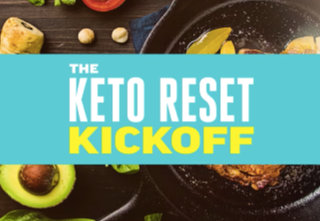 Hey folks, I’ve got Friday Link Love coming right up, but I wanted to mention that we’re closing in on the last days of sign-up time for the (totally free) Keto Reset Kickoff, which begins Monday morning. You have until midnight this Sunday night (1/6) to sign up. After that, the doors close, so to speak.
Hey folks, I’ve got Friday Link Love coming right up, but I wanted to mention that we’re closing in on the last days of sign-up time for the (totally free) Keto Reset Kickoff, which begins Monday morning. You have until midnight this Sunday night (1/6) to sign up. After that, the doors close, so to speak.
The Kickoff won’t be happening on the blog here, so if you want to receive the 7-day email series from yours truly and Dr. Lindsay Taylor—my colleague, co-author and (as many of you know her) administrator of the Keto Reset Facebook group, get your name on the list before Sunday night.
The Kickoff emails and materials will offer a comprehensive look into the full Keto Reset approach with exclusive commentary and video from me, as well as Q&A and additional resources—all totally free. Oh, and did I mention a free ebook and personal journal? For more information, check out my previous post with all the details. I’m looking forward to it!
You can sign up for the Keto Reset Kickoff and receive the 7-day email series, ebook and journal without any purchase whatsoever. Literally, just click here to visit the Keto Reset Kickoff page. Then click the green button at the top of the page that says “Click Here To Get Free Access.” It will take you right to the signup form.
One last thing… Those who participate in the Kickoff are also eligible for a deal even I can’t quite believe: buy a Primal Kitchen® Advanced Keto Kit ($65.95) and get my comprehensive Keto Reset Online Mastery Course entirely free (a $147 value). You are in no way obligated to take advantage of this offer to participate in the Keto Reset Kickoff. But it’s a great way to stock your pantry with staples that will make keto eating easier and more enjoyable as you begin (or continue) your keto journey—and receive an incredibly comprehensive, action-oriented online course to both motivate and inform your full Keto Reset experience.
Thanks, everybody. I hope you’ll join us for the Keto Reset Kickoff next week!
?

The post Last Call: Sign Up For the Keto Reset Kickoff Now! appeared first on Mark's Daily Apple.



January 3, 2019
11 Keto Breakfasts (That Aren’t Eggs)
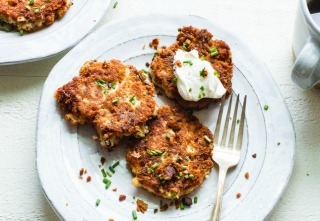 Eggs are an easy and nutritious breakfast, but some mornings a plate of eggs just isn’t what your body craves. Viva variety!
Eggs are an easy and nutritious breakfast, but some mornings a plate of eggs just isn’t what your body craves. Viva variety!
These delicious keto breakfasts are either egg-free or include eggs as a minor ingredient. From keto pancakes, muffins and hot cereal to breakfast sausage and keto pizza, keto breakfasts have never tasted so good.
Bacon Pancakes
These savory bacon pancakes are served with a dollop of sour cream, a sprinkle of chives and a hit of hot sauce. Fluffy and salty, they’re a perfect breakfast for weekends.
Nutritional Info: (2 servings—3 pancakes per serving) Total fat: 21.1 g | Net carbs: 3.4 g | Protein: 19.2 g
Blueberry Keto Muffins
These truly delicious Keto blueberry muffins are a treat worth getting out of bed for. Plenty of butter and cream give these gluten-free, low carb muffins a decadently rich texture.
Nutritional Info: (1 muffin) Total fat: 27.7 g | Net carbs: 5 g | Protein: 7.8 g
Golden Coconut Collagen Latte
A warm and soothing start to the morning, this protein-packed latte combines the nourishing benefits of both turmeric and Primal Kitchen® Collagen Fuel.
Nutritional Info: (1 Serving) Total fat: 5.1 g | Net carbs: 2.4 g | Protein: 11.4 g
Primal Keto Bread
Toasted Primal keto bread is a buttery slice of heaven. Go sweet with the cinnamon version of Primal keto bread, or savory with a garlic and herb version.
Nutritional Info: (1 slice) Total fat: 18.9 g | Net carbs: 2.4 g | Protein: 8.2 g
Homemade Breakfast Sausage
Homemade sausage is sugar and additive free, and for convenience can be made ahead of time and frozen. These flavorful patties are filling on their own and don’t have to be served on a plate with eggs.
Nutritional Info: (1 sausage?) Total fat: 24.2 g | Net carbs: 0 g | Protein: 30.7 g
Summer Breakfast Meatloaf
Meatloaf is an easy breakfast to make ahead of time, and then slice each morning for a protein-rich satisfying start to the day.
Nutritional Info: (1 sausage?) Total fat: 40.9 g | Net carbs: 3.3 g | Protein: 32.7 g
Greek Meatza
Before cauliflower pizza crust, there was meatza. This recipe deserves to be brought back from the past because it’s so darn good, and because it makes pizza for breakfast a keto reality. Serve Greek meatza for dinner then enjoy cold slice of pizza (or, “meatza”) for breakfast the next day.
Nutritional Info: (1 slice) Total fat: 25.7 g | Net carbs: 4.3 g | Protein: 31 g
Pizza Dutch Baby
Another pizza-for-breakfast option, this keto pizza Dutch baby is light and fluffy and flavored with Parmesan, mozzarella and fresh basil.
Nutritional Info: (1 slice) Total fat: 25.7 g | Net carbs: 4.3 g | Protein: 31 g
Chia Flax Hot Pudding
This warm bowl of healthy goodness serves up enough protein, fat and fiber to satisfy until lunch. Optional topping like pecans and fresh berries give this healthy breakfast pudding a dessert-like flavor.
Nutritional Info: 1 serving Total fat: 35.7 g | Net carbs: 7.6 g | Protein: 22.3g
Keto Porridge
If you’re craving oatmeal or hot cereal, this keto porridge is what your body really wants. Made with richly flavorful ingredients like almond butter and coconut, this anti-inflammatory porridge also contains bee pollen, turmeric and hemp seeds.
Nutritional Info: 2 servings Total fat: 50.2 g | Net carbs: 6 g | Protein: 14.8 g
Blueberry Muffin Smoothie
No time to make blueberry muffins? Then try a satiating blueberry muffin smoothie made with healthy Primal Kitchen® Collagen Fuel.
Nutritional Info: 1 Serving Total fat: 31.4 g | Net carbs: 12 g | Protein: 23 g

The post 11 Keto Breakfasts (That Aren’t Eggs) appeared first on Mark's Daily Apple.



January 2, 2019
How to Restart Keto
 Last month, I gave a heads up about what I’m calling the Keto Kickoff—a quick and comprehensive 7-day dive into the ketogenic diet, a pure distillation of the lessons contained in The Keto Reset Diet book. That starts next Monday (sign-up closes Sunday night 1/6/19), and it assumes, but does not require, an audience without any formal experience in the ketogenic diet.
Last month, I gave a heads up about what I’m calling the Keto Kickoff—a quick and comprehensive 7-day dive into the ketogenic diet, a pure distillation of the lessons contained in The Keto Reset Diet book. That starts next Monday (sign-up closes Sunday night 1/6/19), and it assumes, but does not require, an audience without any formal experience in the ketogenic diet.
What about a similar-but-different-enough population—those who have tried keto, stopped for any number of reasons, and want back on the wagon? Should those looking to restart keto do or know anything different?
First and foremost, the basics still apply. Anyone looking to restart keto should pay attention to all the stuff I’ve covered in previous posts and books and will be covering in the Keto Kickoff email series (so sign up today!). Going keto is going keto.
What’s the most important step someone trying to restart a ketogenic diet needs to follow before doing anything else? Identify why you fell off the wagon in the first place. Then address it.
That’s really what sets you apart from the average keto beginner—your preexisting hangups. If anything, you’ll have a better physiological response to the ketogenic diet because your body retains knowledge. Some of that metabolic machinery is still there, still functioning, once you shake off the rust.
But you do need to figure out and overcome what tripped you up the first place.
People have dozens of potential reasons for quitting keto. I can’t possibly cover them all, but I can address and offer solutions for the most common ones.
It Was Challenging Figuring Out How To Eat With Friends, Family, and Colleagues
The people who give this reason usually fall into one of two camps. Either they’re too agreeable and give in to peer pressure (imagined or real) at the drop of a hat, making it impossible to get into any sort of keto rhythm; or they’re too rigid, turning every social excursion with food into an epic battle of will that eventually breaks them. The former group needs to toughen up. The latter group needs to lighten up.
Avoid rigidity and timidity. Stand firm and be resolute in your convictions about what diet makes you feel best; don’t be afraid to say “no” or order a salad with four meat patties when everyone else is getting pizza. In the vast majority of these cases the only one making you feel awkward is yourself. Most people don’t care. And if they do care, it’s probably because they’re intrigued and want to know more. Besides, going keto isn’t such a foreign concept these days. You may even have secret compatriots present who are also restarting keto.
Stick it out for three or four weeks and then lighten up. Once you’ve re-established your ketogenic metabolism and achieved metabolic flexibility, it won’t hurt (that much) to drift in and out on special occasions. You should be able to bounce back relatively quickly after a dalliance with carbs at happy hour, or Thanksgiving, or a birthday party. Just try to stick to healthy Primal sources of carbs to make the transition that much easier.
It Stopped Working
Sometimes keto stops working. An understandable reaction is to stop doing keto. It’s not the ideal move, but it makes sense.
If you’re thinking about restarting keto after a hiatus, and the reason you stopped in the first place was that keto stopped working, you probably have some bad habits or misconceptions to overcome.
You ate too much fat. A common trajectory among keto dieters who plateau is that they overdo the fat. Early on in keto, anything you eat seems to promote weight loss. The extra fat in those early days even upregulates the fat-burning of your mitochondria, speeding up the keto adaptation process. You’re eating more fat than you ever have before, and you only seem to be growing more powerful. It’s a profound sensation. But as you keep eating more and more fat, you plateau. As you attempt your keto restart, remember that getting into ketosis is more about the carbs you don’t eat than the fat you do. Calories don’t stop counting on keto.
You ate too little protein. Protein absolutely can inhibit ketosis, but it takes more than you think. Ketosis is protein-sparing, but you still need to eat it. And some people can get away with far more protein than others and still remain firmly in ketosis. The oft-given blanket advice to “limit protein” can really throw some people for a loop and lead to keto “not working.” Too low a protein intake on keto can reduce performance in the gym, limit or even reverse muscle hypertrophy, increase appetite, and make it hard to construct a palatable meal. If that sounds like you, try eating a bit more protein when you do your keto restart.
It Felt Too Restrictive
Not to toot my own horn too much, but this is one of the main reasons why I developed the Primal Kitchen line. Having an arsenal of reliable, convenient, and most importantly healthy mayos, dressings, sauces, and marinades promotes dietary variability. You end up eating a wider range of meats, vegetables, and other keto-friendly foods when you can modify their taste and presentation by flipping open the top of a bottle of dressing or mixing in some mayo. Meal monotony is a deal breaker for many people on any diet, including keto.
It Was “Too Hard”
That’s about as vague a complaint as you can get, but it’s very common. Going keto forces a totally new way of looking at your food, at your conception of energy, even your experience of the world. Your breath changes. Your grocery shopping routine changes. Three-quarters of the food at your favorite restaurant is suddenly off-limits. Then there’s the salt, potassium, and other electrolytes to worry about.
If you found keto to be just too hard to get a handle on, you’re not alone. Sign up for the Keto Kickoff, refresh your knowledge of the basics (and see what you were overlooking, if anything), get daily support, and do your keto restart right.
You Just Drifted Away
Things snowball, don’t they? You have a quarter of a donut at work because it’s just a quarter of a donut and it’s your favorite kind and it’s free. You get home and taste test the mac-and-cheese you made for your kids a few times, then finish their plate because, hey, it was only a couple more bites and refrigerated mac-and-cheese gets weird. Before you realize it, you’ve eaten refined carbohydrates every single day, haven’t lost a pound, and you can’t rightfully call yourself keto.
Keto drift happens, and it demands a restart. To prevent it from happening again, remember why you wanted to go keto in the first place:
For the fat loss…
For the improved energy…
For the metabolic flexibility…
For the freedom from hunger…
For the potential for a long, healthy, active life…
When you’re ready to get serious, get moving.
It Never Worked…As I Tried It
This is rare, but not inconceivable. Occasionally, a diet doesn’t work.
If keto truly doesn’t work for you, no matter how faithfully or optimally you implement it, don’t do it. Ketosis is still a good state to visit, so just be sure to implement some other method of entering ketosis even if you’re not going to restart the keto diet, whether it’s intermittent fasting, intense exercise (with precautions), caloric restriction, or simply not snacking all the time.
Do make sure you gave it a good three-week try, however, before concluding that “it doesn’t work for me.” That’s the minimum amount of time you need to know if it’s a good fit. If you didn’t give it three full and earnest weeks, sign up for the Keto Kickoff (opportunity for sign up closes January 6th!), and see what additional guidance and support can do for your process.
For those interested in beginning the new year with the Keto Reset Diet library of books, for a limited time all the original bonus gifts—ebooks, audio, video and Primal Kitchen discount codes—for each book (The Keto Reset Diet, The Keto Reset Cookbook, and the The Keto Reset Instant Pot Cookbook) are available with purchase again.
Thanks for reading today, everyone. Are you restarting keto? Trying it for the first time? Committing to another deep dive after a successful keto experience before? I’d love to hear your stories, questions and tips for all who are taking up keto in the new year.

The post How to Restart Keto appeared first on Mark's Daily Apple.



January 1, 2019
Dear Mark: How Do the Hadza Eat So Much Honey? and Happy New Year!
 For today’s edition of Dear Mark, I’m answering one eternal question: How do the Hadza tribespeople of Northern Tanzania eat so much honey and maintain their trim figures and pristine metabolic health? Are they eating keto whenever they’re not eating honey? Are they running hill sprints to burn through glycogen stores and improve their insulin sensitivity? Are they trading mongongo nuts for Metformin? Or is there something unique about honey that makes it different than sugar?
For today’s edition of Dear Mark, I’m answering one eternal question: How do the Hadza tribespeople of Northern Tanzania eat so much honey and maintain their trim figures and pristine metabolic health? Are they eating keto whenever they’re not eating honey? Are they running hill sprints to burn through glycogen stores and improve their insulin sensitivity? Are they trading mongongo nuts for Metformin? Or is there something unique about honey that makes it different than sugar?
But before I get to the question, it’s a brand new year.
This New Year promises to be bigger and better than ever. Change is in the air, and not just in my own life. Everyone I talk to—all my friends, colleagues, family members, and random acquaintances—seems to be entering a period of great change. Their professional lives, their relationships, their health, their mindsets are all shifting. And for the better. The way I see it is that change happens regardless of what you do. It’s a far better idea to take the reins and make the change work in your favor than let yourself be swept away by powers and fate unseen.
Happy New Year to everyone! I hope 2019 is your best yet, and I’d love to hear your visions for it.
Okay, on to the question:
What are your thoughts on honey as the sweetener for the mulled wine? Given how the Hadza draw so many of their carbs from honey (especially given the particular sugars and micronutrients that it contains), I’m surprised it doesn’t appear more often in these recipes that call for sweetening.
In case readers are unaware of the reference, the Hadza are one of the few remaining hunter-gatherer groups on this planet. They inhabit northern Tanzania, and their lives haven’t changed much at all. They’ve resisted ethnic admixture from other groups. They still hunt and gather for the vast majority of their calories. Their hunting and foraging grounds have been condensed due to pressure from the state, and there are probably fewer game animals available, but they’re still in the same general area. According to their oral traditions, there’s even no indication that they came from somewhere else.
One of the more striking features of their diet is their utilization of honey.
Ask the average Hadza tribesperson what their favorite food is and “honey” will be the answer.
Catch the Hadza during the right month and they’ll get half their calories from honey. Averaged out across the year, they get 15% from honey.
They even use a bird called the honey guide to lead them to the choicest hives. After completing the harvest, they’ll burn or bury the remnants to keep their honey guide from getting too full for the next search.
The honey isn’t your store-bought, pristine golden syrup smelling faintly of HFCS. It’s straight up honeycomb, teeming with bees and larvae and pollen and the queenly secretions called royal jelly. In fact, studies tend to emphasize that the Hadza get 15-50% of their calories not from honey, but from “honey and bee larvae.”
Bee larvae, also known as bee brood, is packed with protein, vitamins, and minerals. It’s high in folate, B12, thiamine, pantothenic acid—pretty much all the B vitamins—and biotin, to name a few.
Whole hive eating also means eating the royal jelly, a potent, superconcentrated secretion used to feed larvae and queens. Think of it as colostrum, the potent milk mammals provide for their infants in the first few days of life. Royal jelly has shown potential activity (in humans, no less) against allergic rhinitis, reduced the toxicity of cancer drugs in patients, lowered cholesterol in adults with high cholesterol (and women), and improved glycemic control and oxidative stress in diabetics.
How about the honey itself? I’ve written about honey as a sweetener and explored how its metabolic effects differ from plain white sugar. Suffice it to say, the evidence is clear that honey isn’t just sugar. Honey contains sugar—a lot of sugar—but it’s much more than that.
A set of studies in humans compared the effects of honey, sham-honey (a mix of fructose and glucose), dextrose (which is just glucose), and sucrose on several health markers. Honey resulted in smaller blood glucose spikes (+14%) than dextrose (+53%). Sham honey increased triglycerides, while real honey lowered them along with boosting HDL and lowering LDL. After fifteen days of honey feeding, CRP and LDL dropped. Overall, honey improved blood lipids, lowered inflammatory markers, and had minimal effect on blood glucose levels, despite being similarly high in fructose in particular and sugar in general.
So, in some respects, the honey the Hadza eat like crazy isn’t the honey that most of us can easily obtain in stores or even farmer’s markets. Yet even standard honey is different from—and better than—white sugar.
This is a roundabout way of saying that a little honey will be just fine in your mulled wine. Extra points if you can throw some bee larvae and royal jelly in there, with maybe even a dash of Hadza fecal bacteria.
Of course, don’t eat 15% honey diets. You are not Hadza. You are not living like the Hadza. You don’t have the precise genetic makeup of the Hadza. It won’t work as well for the average Westerner reading blogs.
Do you eat honey? How do the metabolic effects compare to sugar in your experience?
That’s it for today, folks. Thanks for reading, and be sure to tell me your thoughts and New Year intentions down below.

References:
Shaha A, Mizuguchi H, Kitamura Y, et al. Effect of Royal Jelly and Brazilian Green Propolis on the Signaling for Histamine H Receptor and Interleukin-9 Gene Expressions Responsible for the Pathogenesis of the Allergic Rhinitis. Biol Pharm Bull. 2018;41(9):1440-1447.
Osama H, Abdullah A, Gamal B, et al. Effect of Honey and Royal Jelly against Cisplatin-Induced Nephrotoxicity in Patients with Cancer. J Am Coll Nutr. 2017;36(5):342-346.
Chiu HF, Chen BK, Lu YY, et al. Hypocholesterolemic efficacy of royal jelly in healthy mild hypercholesterolemic adults. Pharm Biol. 2017;55(1):497-502.
Lambrinoudaki I, Augoulea A, Rizos D, et al. Greek-origin royal jelly improves the lipid profile of postmenopausal women. Gynecol Endocrinol. 2016;32(10):835-839.
Pourmoradian S, Mahdavi R, Mobasseri M, Faramarzi E, Mobasseri M. Effects of royal jelly supplementation on glycemic control and oxidative stress factors in type 2 diabetic female: a randomized clinical trial. Chin J Integr Med. 2014;20(5):347-52.
Al-waili NS. Natural honey lowers plasma glucose, C-reactive protein, homocysteine, and blood lipids in healthy, diabetic, and hyperlipidemic subjects: comparison with dextrose and sucrose. J Med Food. 2004;7(1):100-7.
The post Dear Mark: How Do the Hadza Eat So Much Honey? and Happy New Year! appeared first on Mark's Daily Apple.



December 31, 2018
Primal Health Chef: Using Food For Health
It’s Monday, everyone! And that means another Primal Blueprint Real Life Story from a Mark’s Daily Apple reader. If you have your own success story and would like to share it with me and the Mark’s Daily Apple community please contact me here. I’ll continue to publish these each Monday as long as they keep coming in. Thank you for reading!

I’m a Certified Executive Chef by the American Culinary Federation. I have about 20 years of experience in the field.
During my training as a Chef and years working in kitchens for all kinds of outlets (Restaurants, Hotels, Employee Cafeterias, Dining Services of Universities), I learned and then implemented the knowledge that a balanced nutritional plate is supposed to have 3 components: a protein, a vegetable and a starch, and how to control the amount of fat used to produce this plate.
I moved from Buenos Aires, Argentina, to Columbus, Ohio, USA, to finish my Chef training. The possibilities of success here were much better, so my wife and I decided to make it our place to grow our family.
 After several years working in a great restaurant, I started to have episodes of headaches that would end with me throwing up and having to leave work. This would happen at least once a week. I ended up going to the doctor and found out that I had very high blood pressure (180/150 mm Hg), so the doctor started me on BP medicine. My BP was under control for several years until one of my yearly visits to the doctor. After my vital signs were taken and the blood work came back, the doctor told me that he needed to increase my BP medication and that I had become pre-diabetic. He said that in the next visit he would probably have to prescribe some diabetes medicine to me. I refused to believe that I was becoming a diabetic person and have never been very friendly to take drugs, so I asked the doctor if I had any other ways to turn this around. His answer was that all of this was hereditary and there was nothing else I could do about it.
After several years working in a great restaurant, I started to have episodes of headaches that would end with me throwing up and having to leave work. This would happen at least once a week. I ended up going to the doctor and found out that I had very high blood pressure (180/150 mm Hg), so the doctor started me on BP medicine. My BP was under control for several years until one of my yearly visits to the doctor. After my vital signs were taken and the blood work came back, the doctor told me that he needed to increase my BP medication and that I had become pre-diabetic. He said that in the next visit he would probably have to prescribe some diabetes medicine to me. I refused to believe that I was becoming a diabetic person and have never been very friendly to take drugs, so I asked the doctor if I had any other ways to turn this around. His answer was that all of this was hereditary and there was nothing else I could do about it.
I decided to look for a second opinion. I was lucky to find a functional doctor. Before the visit, there was a questionnaire. I remember that one of the questions was something like “write down what your goal is for when you retire.” That made me realize that I really wanted to be able to see my kids graduate from college, get married, have kids, and be around when my grandkids graduate from college. Considering that my kids were still in elementary school at this time, I had to stay healthy for a long time.
This new doctor presented me with an elimination diet that I started the same day I was inspired by the question from the questionnaire. At the end of my visits I was presented with the Paleo Lifestyle, which (without knowing) I always had a sense was the right thing to do. After about a year, I was almost out of the BP medicine and had lost 30 lbs. I also never had to talk about diabetes as my blood work was pretty good—until I left a job of 7 years and let myself go back on eating grains and sugars while looking for a new job. When I went back to the doctor for my yearly check up, my blood work results came back as the worst I ever had. It only took 6 months to reverse all the good this lifestyle has done on myself. I realized that I had done wrong, and started back with even a stronger belief that the right thing was to avoid all grains, legumes and sugars. After 3 months my blood work was back to almost perfect.
 About this time I started listening to the Primal Blueprint Podcast (it was sometime before the launch of The Keto Reset Diet. I had read The Paleo Solution and Wired to Eat from Robb Wolf, but had never read anything from Mark Sisson. I really liked Mark’s approach and also liked the podcast. Something about it started making me think about wanting to help others to improve their health, so after doing some research on the different coaching programs that existed at that time, not too many, I decided that the Primal Health Coach Institute was the best option. Now I’m a certified PHC. So far I had only one client that requested a menu with easy recipes to be able to follow the program.
About this time I started listening to the Primal Blueprint Podcast (it was sometime before the launch of The Keto Reset Diet. I had read The Paleo Solution and Wired to Eat from Robb Wolf, but had never read anything from Mark Sisson. I really liked Mark’s approach and also liked the podcast. Something about it started making me think about wanting to help others to improve their health, so after doing some research on the different coaching programs that existed at that time, not too many, I decided that the Primal Health Coach Institute was the best option. Now I’m a certified PHC. So far I had only one client that requested a menu with easy recipes to be able to follow the program.
As I’m a Chef who has been training young students in University environments as new kitchen employees—and being aware that most people in the States don’t know how to cook and are afraid to be in their kitchens—I decided that my best option is to help people to be re-introduced to their kitchens, creating simple recipes and teaching them how to cook.
As we believe that 80% of our health is what we eat I strongly believe that everyone needs to learn the kitchen basics to be able to cook and better understand how to make special requests in restaurants when eating out, eventually making an educated decision when picking a restaurant.
My motto is:
Food for Health
Because you are worth it
I still love cooking and I have a project that is on the final stages of a loan application to build a Primal Food Truck in Columbus Ohio. I’m hoping to have it ready for Spring 2019 to start the Food Truck season here in Columbus. The name will be PH Chef, PH has to do with Primal Health and also to ph balance as I relate that to the balance food gives you when you eat right.
I’m sharing with you the menu that I’m planning to start with, probably with some changes as I have time to keep playing with food.
Appetizer
Baked Egg on Avocado
Pork Belly and Avocado Dressing
Salad
Romaine Heart
Big Ass Salad
Jicama Slaw
Proteins (all grass-fed, pasture-raised or wild-caught)
Kombucha Smoked Pulled Pork
Pulled Braised Beef
Pulled Roasted Chicken
Baked Sockeye Salmon
Sides
Braised Red Cabbage
Sweet Potato Hash
Smashed Cauliflower
Pico
Buttered Green Asparagus
Liquids
Mate and Hibiscus Kombucha
Mate Cocido
Bone Broth
Fresh Water
My website is https://www.theprimalhealthchef.com/.
Joel Linik
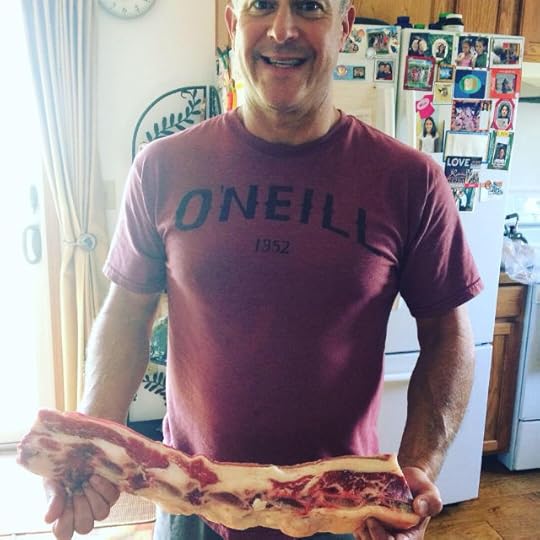

The post Primal Health Chef: Using Food For Health appeared first on Mark's Daily Apple.



Mark Sisson's Blog
- Mark Sisson's profile
- 199 followers





